Most recently updated January 16th, 2025
As the weather changes with the seasons, you should also update your hiking boots for better performance and comfort.
But how do you know what features the best hiking boots or hiking shoes for the weather and your hike should have?
Of course you should like how they look, and they should feel good when you try them on – but beyond that, what are the most important things to look for?

Some boot features to consider:
-
-
-
- Are they waterproof?
- Do they have cushioned shock-absorbing heels?
- Do they have grippy soles?
-
-
If your feet are wet or painful, you won’t be able to think about anything else – and might not even be able to complete your hike.
What you put on your feet is without a doubt your most important piece of hiking gear, so you’ve got to get it right!
Hiking boots or trail running shoes (not regular road running shoes) are your best hiking footwear options.
Aside from fit, one of the most important things to consider is what kind of trail you’ll be on, and how long you’ll be on it 🙂
NOTE: This article is packed with photos of fantastic places I’ve hiked, and boots you might like to try out. Click on any boot image to get more information.
Some of my posts contain affiliate links. If you make a purchase through an affiliate link, I will receive a small payment at no additional cost to you. As an Amazon Associate, and other marketing affiliations, I earn from qualifying purchases. I do not get paid for recommendations, all opinions on this site are my own. See full Disclosure page here.
Hiking Boots 101

There are several different basic types of hiking foot gear:
Hiking shoes or trail runners, day hiking boots and backpacking boots.
-
-
-
- Hiking shoes or trail runners are low-cut models with flexible midsoles.
- Day hiking boots come in mid- and high-cut models, flex easily and require little break-in time.
- Backpacking boots are designed to carry heavier loads on multi-day trips, with a high cut and stiffer midsoles.
- Mountaineering boots are the most sturdy and durable kind and are really only needed if you’ll be trekking up very rugged alpine peaks.
-
-
Choose a style of hiking boots that can handle whatever terrain and weather you’ll be hiking in.

Different Types of Boots
There are 4 major categories of hiking boots. (You can see a huge variety of the best boots for hiking here.)
I’ve listed them below in order of the lightest and least amount of support (trail-runners) to the most heavy duty (mountaineering boots).
Trail Runners
Day hikers enjoy these shoes for easier trails and since they’re lightweight, many thru-hikers also choose to hike in trail runners. You can move faster in them and they dry more quickly than other shoes, too.

That said, regular running shoes don’t provide the traction for stabilizing on uneven terrain, dirt, rock, roots, and snowy or wet trails.
If you really don’t want to wear boots, choose trail running shoes (not regular runners) that have extra grip and cushion rather than a normal pair of road running shoes.
NOTE: Trail runners don’t last as long as hiking boots, it’s important you replace them when they’re worn out so you protect your feet from injury.
Trail runners are good if:
- You’re hiking in extremely hot weather
- You want very lightweight shoes
- You don’t want to have to break them in
- You want versatile shoes
You can usually find trail runners in the footwear section at outdoor recreation stores, alongside the hiking boots.
Day Hiking Boots
Look for low-cut models with more flex in the midsole—for comfort over shorter distances.

Typically, they’re a combination of fabric and leather, so they breathe well to help keep your feet dry.
Use a low-ankle trail shoe if:
- You’re hiking shorter distances or just day-long hikes
- You’re carrying a light load on your back
- You’ll be on well-worn flat trails
- You don’t need ankle or knee support
Distance Hiking Or Backpacking Boots
These are the best boots for longer day hikes to shorter backpacking trips. They’re flexible and don’t require a long break-in time, so they’re best for covering mid distances with lighter packs.


This style has high ankle support for good stability, waterproof leather, more cushion in the midsole but also stiff enough to support your foot while walking.
In general, these boots are more durable and rigid than a trail runner. They have the support you need for longer treks, and are good for on-and off-trail travel.
Go for a lightweight backpacking boot if:
- You’re hiking in variable conditions like muddy, steep or rocky terrain
- You’re going on a multi-day hike
- You’re carrying a heavy load on your back
- You need more support for your ankles and knees
- You’re a beginner who wants to tackle more challenging hikes later on
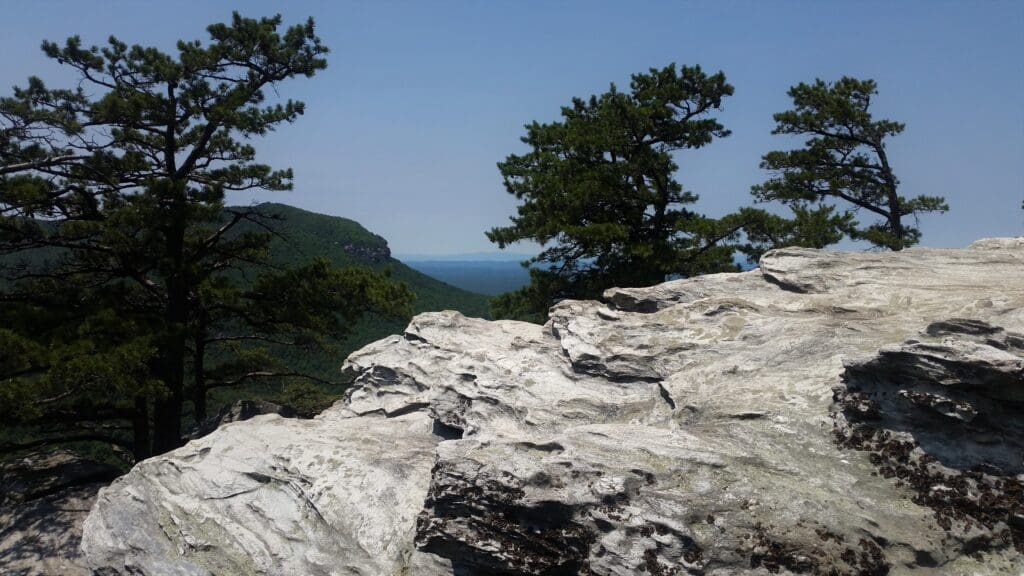
MOUNTAINEERING BOOTS
Mountaineering boots have a heavy and durable construction, so you’ll need at least a week or two to break them in and feel comfortable.
These boots might need extra attachments such as crampons or microspikes for better grip, and are better on hard-packed icy terrain.
You’re most likely not going to need a shoe as specific as mountaineering boots, so I’d recommend sticking to hiking shoes or backpacking boots to get the most use out of your boots.
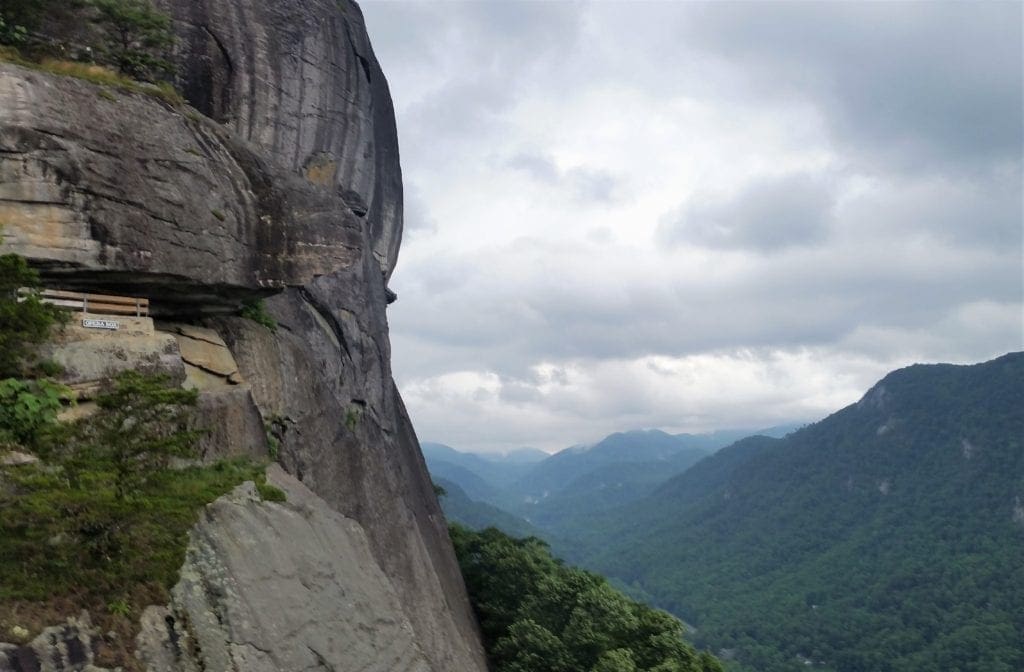
Boot Anatomy
There are a few important pieces of boot anatomy to consider when you’re buying a boot.
You should know what the uppers, midsoles, and outsoles are made of before you make your purchase.
Read through the descriptions below to learn more:
Hiking Boot Uppers
The type of material used for the top of your hiking boot makes a difference in performance, and you should pick a material based on the type of hiking you’re planning on doing.

Waterproof options are ideal for rainy climates while full-grain leather can mold to your feet.
Choose from full-grain leather, split-grain leather, nubuck leather, synthetics, waterproof membranes, vegan options and insulated materials.
Hiking Boot Sole
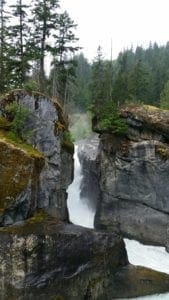
Every hiking boot has three different kinds of soles: a midsole, an insole and an outsole.
Each of these three soles plays an important part in supporting your foot while you’re hiking.
You can choose from a variety of options depending on what activity you are doing.
Hiking Boot Midsoles
The midsole provides cushioning and absorbs shock. You won’t find this layer in very light and flexible trail shoes, but you’ll definitely find it in a hiking boot.
The midsole is the second layer of cushion placed in between the insole and outsole to help absorb the shock of walking on hard and rocky surfaces.
Most times the midsole is attached to a piece called the shank that provides extra sturdiness and is often made out of composite or steel.

Hiking Boot Insoles
The insole of a shoe is that soft and cushioned portion that you feel right beneath your foot when you slide your shoe on.
It ‘s removable and can be replaced with one that better suits the shape of your foot, or even if it just wears out.
Make sure you know how much arch support (if any) you need and what kind of insole supports your foot best.
Collapsed arches or an arch that’s too high can cause wear and tear on your feet, ankles, knees and hips. If you’re on the trail for days at a time carrying a heavy pack, this could be a big problem.
You can try on different insoles in a store to see if you need more or less support.

Hiking Boot Outsoles
The outsole is the thick, rubbery portion on the very bottom of your shoe or boot.
Most hiking boots have dense outsoles with treads (also called lugs) that are good all-terrain footwear due to the traction and grip it provides.
You’ll want deep, thick lugs for backpacking. Bigger, more widely spaced lugs offer nice traction and also shed mud easily.
Hearty tread is important for multi-day backpacking trips and trails with hard-to-walk on or slippery surfaces.

Tips for Trying on Boots
You can get fitted for hiking boots by footwear pros at outdoor stores such as Dick’s, Bass Pro, and REI .
You can also find some good brands that are serviceable and a little more budget-friendly online at Amazon, or some discount retail or outlet stores.
Here are some tips for trying on boots yourself (without a pro):
Check Your Insole
Boots should be snug everywhere except the very front, where you should have about a half inch between the end of your toes and the end of the boots.
Remove the factory insole and stand on it. Look for a visible finger’s width of the insole past your toes.
Test Boots On An Incline
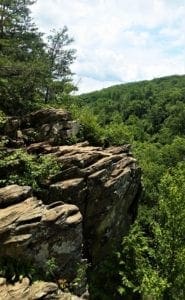
While walking uphill, make sure there is no movement in the heel.
When walking downhill, stomp your feet hard.
Ideally, the boot will hold your foot in place and your toes will not touch the front at all.
If they do touch and the laces are snug, the boots are either too wide or too short. Try the next size up unless you feel your foot slipping inside the boot.
Fit Your Foot, Not Your Shoe Size
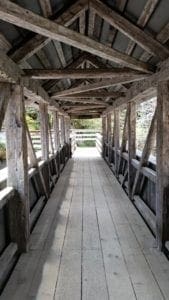
Each shoe or boot’s fit will be different, and that will vary by purpose, as well.
You may need one size for your work shoe, another size for your hiking boot, and still another for your running shoe.
Don’t purchase boots from an online store without being fitted first. You’ll be more likely to order the right size if you’ve been fitted.
Lace Them Up
When trying on boots, tie the laces as if you were hiking. You might miss an important red flag if your shoes aren’t properly laced during the fitting process.
Socks Are Important
Make sure to wear the correct socks for your hike – and for sure wear the heaviest socks you think you’ll need when trying on your boots!
Socks should provide a layer of cushion and wick moisture from your feet. I use one thin wicking sock layer under a heavier sock on top.

Choose the Best Boots for Your Hike
How to choose the best hiking boots depends largely upon what kind of hike you are taking.
The climate and terrain, length of the hike, and the activities you’re doing – backpacking or day hike – will help determine what sort of boots you should buy.
To help you make the best decision here are a few basics to consider before you choose hiking boots:
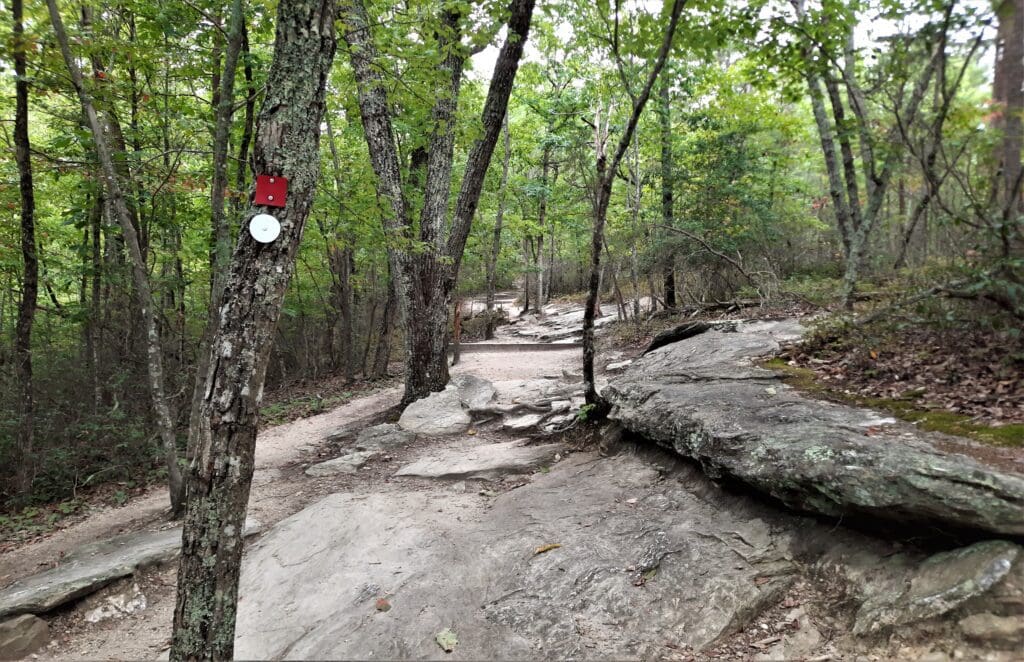
LENGTH AND TERRAIN OF THE HIKE
The length of your hike and the type of terrain matters when it comes to footgear.
A multi-day backpacking trip requires sturdier boots with better tread and ankle support than an easy/moderate trail on flat ground would need.
WEATHER AND CLIMATE
If it’s cold and rainy or you’ll be hiking through streams and snow, waterproof boots are a must! They’ll keep your feet dry and also ward off hypothermia.
On the other hand, a boot with mesh paneling and ventilation is better when you’re hiking in a hot humid climate – like South America or North Carolina 🙂
ACTIVITIES ON YOUR HIKE
Different types of boots and shoes work better for different types of activities. For example:
-
-
-
- Mountaineering boots have high ankle support and rigid soles for sturdiness, but don’t allow for much flexibility to help you stay steady.
- Trail shoes are less stable on rocky terrain with low/mid cut upper for more movement, but won’t hold up as well as heavier boots if you’ve got a full pack.
-
-
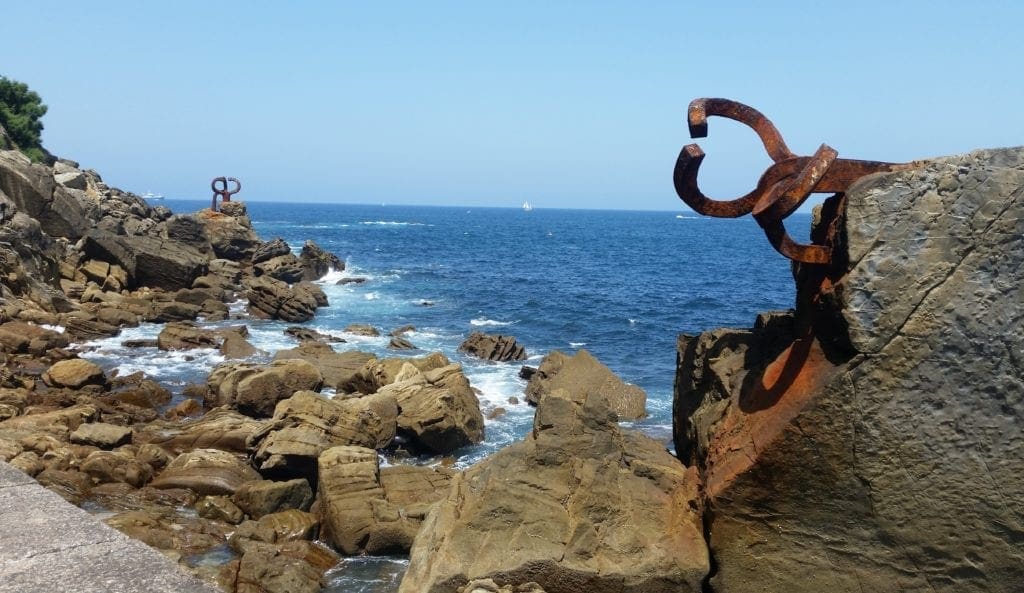
Break-In Period For Hiking Boots
Hiking boots are constructed from heavier, sturdier materials than most other kinds of shoes. Among hiking boots, the heartier the hiking boot, the more time it will take to get softened up and mold to your foot.
It’s a good idea to break the most heavy duty hiking boots in gradually and over time to prevent painful blisters.
If you’re breaking in all leather boots, start by taking short walks around the house, then the block, and eventually on short hikes. Start the process about a week or two before you wear them out on the trail.
You never want the first time you wear a hiking boot to be the first day of your multi-day backpacking trip.
If your boot has mixed material construction, they’ll be more flexible to begin with and you should be able to break them in with only a couple of short walks.
How Should Hiking Boots Feel?
Having the right fit and feel is a huge part choosing the best hiking boot for your foot. If you’re new to hiking, you may not know how your boots should feel.
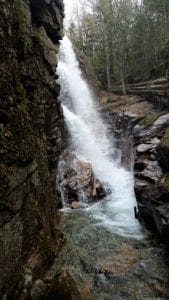
Here are a few things to keep in mind when you’re trying on new boots:
-
-
-
- Always try your shoe on at the end of the day when your foot is the largest and slightly swollen
- If you wear insoles, make sure to bring them along when you try on boots in-store
- Have enough space in the toe box to slightly wiggle your toes
- The boot should be snug enough that your heel won’t lift up when hiking up and downhill, but you don’t want your foot to feel squeezed
-
-
Best Hiking Boots – Recommendations
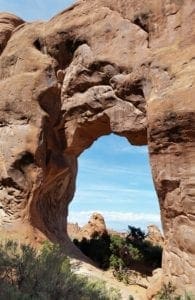
Below I’ve linked to some specific boots or shoes with the different characteristics discussed above.
The ones at the beginning are the popular brands, and for good reason – they are well-made and last a good while. Some of them are a little bit pricey.
I also have a selection of less expensive, but still pretty good boots towards the end of the page. You might want to start with a pair of those if you aren’t quite sure what you need.
Below are links to a selection of recommended boots for both women and men. Click the link or the image for more information:
Oboz BDry Hiking Shoes
The Oboz Bridger BDry Boots have a sturdy sole and are moderately stiff, but pretty easy to break in. If you don’t like a boot that goes up this high they have a similar low-cut model, known as the Oboz Low BDry Hiking shoe.
Oboz Men’s Bridger Bdry Hiking Boot,Sudan,12 EE US:
Oboz Bridger 9″ Insulated B-Dry Hiking Boots – Women’s :
Oboz Hyalite Low Shoes – Men’s:
Oboz Sawtooth II Low B-Dry Hiking Shoe – Women’s:
Altra Lonepeak or Brooks Cascadias
Some people prefer to hike in trail runners. Both Altra and Brooks are good picks. For a bit more support, try out La Sportiva Synthesis Mid GTX hiking boots.
Merrell Hiking Shoes and Boots
Salomon Hiking Shoes and Boots
Salomon boots are another very popular brand. Here are a couple of picks.
Salomon Women’s Quest 4D 3 GTX Backpacking Boots:
Salomon Men’s Outdoor Hiking Shoe:
Timberland Hiking Boots
Timberland is another popular brand for men and women that have more options on the less expensive side.
Timberland Men’s RipGorge Mid Hiker Boot:
Timberland Women’s Chocorua Trail Boot:
Best Hiking Boots Under $100
If you’re not quite sure what you need, or even if you’re a beginner and not sure if hiking is your thing yet, you could start with a less expensive boot or shoe.
In a nutshell, if your feet are happy, you’ll have a much better hiking experience. The boots you choose will have a lot do with it.
Hopefully these tips will make it easier for you to find the perfect hiking boot for your foot and the hike you’re planning.
See my Gear page and Dayhike Gear post for more info on recommended boots and other hiking gear.
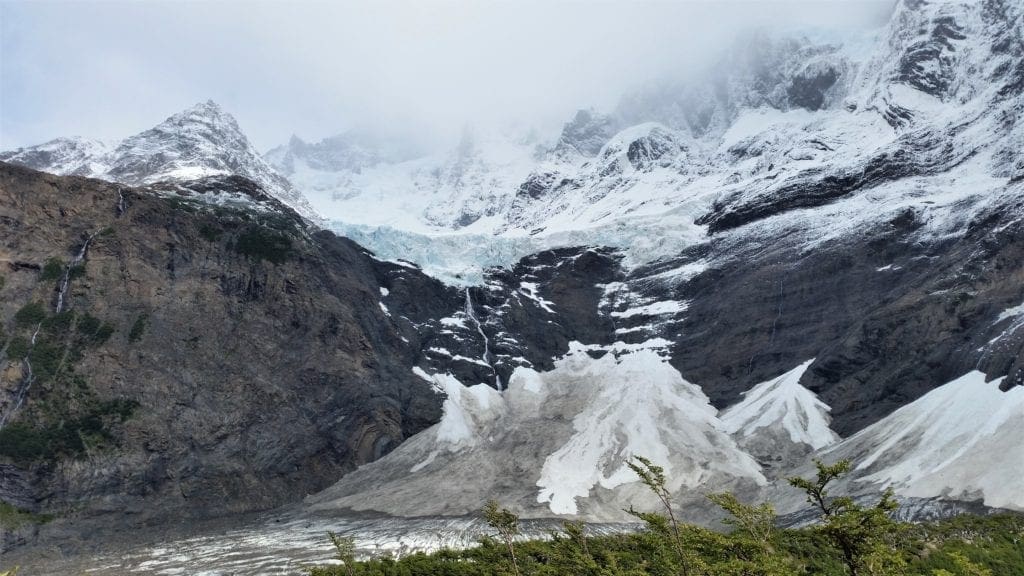
Leave a comment about your favorite boots and what trails you wore them on, or if you have a question drop me an email and I’ll reply as soon as I can.
Thanks for stopping by – see you next time! LJ
To get new posts via email Subscribe here!
If you like this post, please share it!
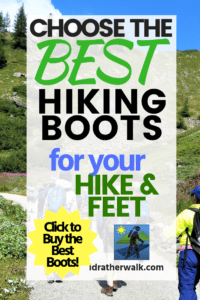


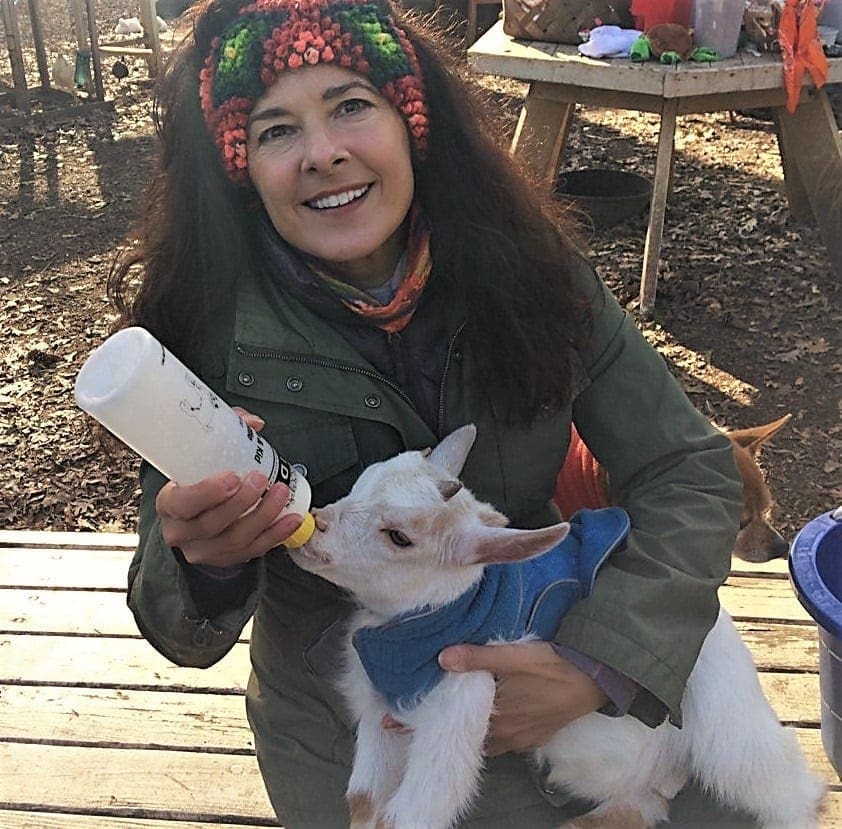
LJ has spent much of her free time as a single Mom – and now as an empty-nester – hiking in the US and around the world. She shares lessons learned from adventures both local and in exotic locations, and tips on how to be active with asthma, plus travel, gear, and hike planning advice for parents hiking with kids and beginners of all ages. Read more on the About page.

















